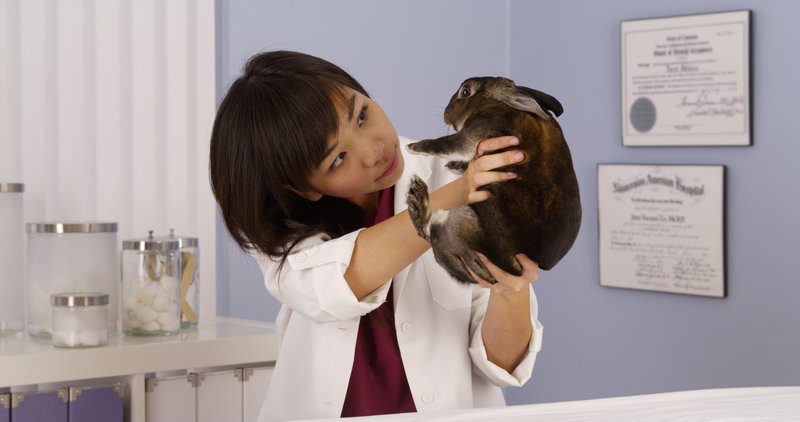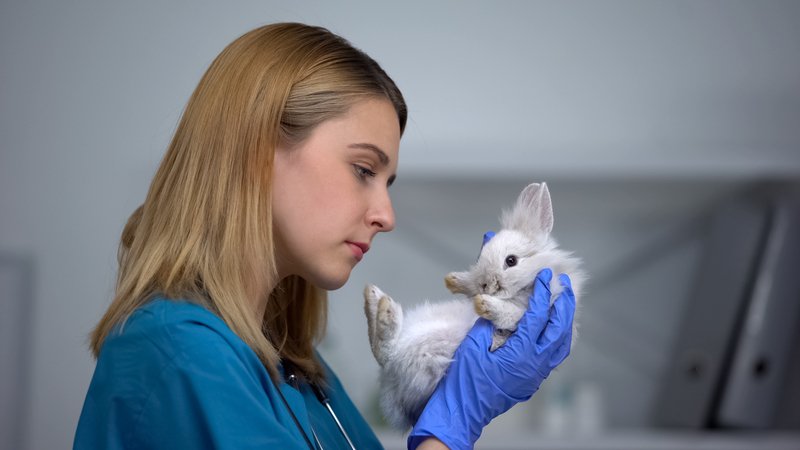Your rabbit sneezes. If once, you might consider he just got a little dust in his nose. But what if he continues to sneeze? And what does that discharge from his nose mean? Could your pet rabbit have a cold? Most pet owners don’t understand the respiratory problems in rabbits. But vets say that rabbit owners need to know about the possible respiratory problems rabbits might develop.
Respiratory Problems in Rabbits
Sweet and fun, rabbits make great pets. The number of people adopting rabbits as pets continues to rise each year. If you plan to get one, you should know about their needs and health care. Problems related to the respiratory system often require pet owners to react quickly. Having a basic knowledge of signs of respiratory problems in rabbits and knowing how to react often proves life-saving for your pet.
In domestic rabbits, respiratory problems are widespread. Most frequently diagnosed include Pasteurella, a common respiratory problem with numerous clinical signs.
Domestic rabbits face respiratory problems, often owing to stress, environmental conditions, overcrowding, and sometimes transportation can lead to respiratory problems, if not the already mild infection going on in the body can aggravate.

Respiratory diseases
Rabbits are prone to severe respiratory conditions that can put your pet in bed for days without leaving them active enough to play with you. These diseases can leave your pet unable to defend itself and even kill it.
Major respiratory problems in rabbits include
Pasteurellosis
Pasteurellosis is caused by the bacteria Pasteurella multocida. Rabbits can become infected by this bacterium shortly after their birth, and the incidence of the condition increases with age up to 5 months. Pasteurellosis is a highly contagious disease that spreads through direct contact and aero nasal route.
Most rabbits are healthy and are asymptomatic carriers. Therefore, more care and attention are needed because this agent is not specific to rabbits only. It can spread to other animals, such as dogs and cats.
Clinical signs
Pasteurella affects the respiratory organs and nasal cavities along with mucous membranes and expands to other organs including the reproductive system and ears. Pasteurella can induce secondary infections as well.
Following are the clinical signs that are associated with pasteurellosis in rabbits
Rhinitis
Chronic or acute infection of the mucous membranes of the nasal cavities produces serous discharge from the eyes and nose. This discharge can turn purulent later. This sign is very common in the common cold that occurs with the changing weather, and you can quickly diagnose it as, initially, it is the thin fluid that becomes thick with time. Signs of sneezing and coughing usually accompany this.
Otitis media or interna
Otitis means inflammation of the ear. The ear has three parts and inflammation of the middle and internal ears is called otitis media and otitis interna respectively. This is a leading sign of pasteurellosis in rabbits as the pet shows a tilted head. This sign indicates a more or less clinical or subclinical case of pasteurellosis.
Conjunctivitis
Another common clinical sign of pasteurellosis is weeping eyes, i.e., continuous tears from the eye due to nasal cavity inflammation. This is not specific to pasteurellosis because conjunctivitis can be due to mechanical irritants as well.
Prevention
Pasteurella can develop in your rabbits in any season and render them very weak. Therefore, you must take serious care of your surroundings by disinfecting the area of your pet and the personal space where your pet sleeps and spends its day. Also, wash your hands and the utensils your pet takes food in. Apart from the aero-nasal route that is not in your control, managing the environment for your pet and yourself allows your pet to enjoy a more healthy and better life with you.
Treatment
Treating Pasteurella is always challenging, even for your experienced veterinarian. Vets often advise antimicrobial drugs to help compete against the infection. The drugs may fight and kill the bacteria and get the infection under control but the microbial agent doesn’t leave the body altogether. The prescription also contains other drugs to manage other signs.

Image above of rabbit with respiratory problems being examined
Pneumonia
Pneumonia is one of the severe and complicated respiratory problems that, if left untreated, can be fatal. The most common causes of pneumonia include infection from a bacteria or virus, mismanagement, or transportation stress, which affects the animal’s lungs. The disease has various stages depending on the extent of damage and infection to the part of the lung damaged.
Clinical Signs
The clinical signs of pneumonia depend on the type of pneumonia in the animal, which might be aspirational, gangrenous, or shipping. The common signs that develop during pneumonia include
- Coughing
- Labored breathing
- Rapid heart rate
- Fever
- Bluish mucous membranes
Prevention
Some types of pneumonia can be prevented. For example, aspirational pneumonia is caused by the accidental entry of any food material into the respiratory tract. Care should be taken when feeding your rabbit.
Treatment
Pneumonia progresses to a severe condition as a result of bacteria that benefit from the situation and grow and induce more infection thus leading to a more severe condition. Therefore, you should consult your vet timely in treating pneumonia.
The treatment of pneumonia includes, most prominently, antibiotics that help your rabbit’s body fight the infection. This helps get your rabbit’s lungs back to normal without making chronic changes.
Rabbit flu
Similar to the human cold, rabbit flu is caused by a bacterial agent that induces the contagious flu in rabbits. It passes easily to other animals or rabbits in the vicinity. Rabbits might also fall prey to viral infection as well. Still, the major problem with bacterial infections continues as they repeat again and again. In fact, even with intense care, the bacteria causing the flu often remains in the body, ready to activate again.
Clinical signs
Bacterial-induced flu in rabbits is very contagious. It easily transmitts from anywhere in the surroundings, especially from you if you have been in contact with other rabbits or animals. The clinical signs include
- Running nose
- Red eyes
- Cough
- Conjunctivitis
- Mucus discharge
- Labored breathing
Prevention
Preventive measures should be followed strictly because if the causative agent is bacterial, mainly in rabbits, then there are limited chances of full recovery. Infected rabbits show symptoms repeatedly, which often causes more health issues over time.
To prevent the spread of rabbit flu, be sure to disinfect the rabbit’s surroundings and clean the utensils and your hands before you feed it. Also, take strict care when visiting any domestic pet location from where you might bring the causative agent.
Treatment
Treatment of the contagious rabbit flu is essential because a slight mistake in the course can prolong infection, which might lead to the death of your pet. Visit your vet to diagnose the type of infection that your rabbit might have and get the treatment accordingly.
For bacterial infections, vets usually recommend antibiotics. However, a chance remains for the infection to occur again shortly. This happens if the infectious agent is a virus. In case of seasonal or stress-induced flu, the medication may only include some painkillers and related drugs to help your rabbit ease the stress of the infection.
Other Signs of respiratory problems in rabbits
Rabbits, like many animals, try to hide any symptoms of illness. In the wild, this proves necessary to avoid being the target of a predator. You might not even notice a discharge at first. Those front paws come in quite handy at wiping away the evidence. Your rabbit might even try to avoid sneezing in front of you at first.
A very tell-tale sign shows on the inside of their front paws. Most rabbits use the front paws to wash their face and ears. A sick bunny also uses them to clean the discharge from a runny nose or matter from eyes. Take a look at the inside of your rabbit’s front paws. If he has been cleaning away discharge from eyes or nose, you should see it on his fur.
And that is is the best time to catch any problems, before they become too severe. We check these areas of the paws each time we pick up a bunny. It’s just that crucial.
Any time your rabbit seems a bit listless or sits hunched up, check him over for general health including respiratory problems. Look for dull eyes, a dull attitude, rough coat, or other signs of ill health. Finding problems early makes them easier to save.

Vet checking bunny for respiratory problems, checking front paws
Knowing the respiratory problems in rabbits is invaluable.
These problems often become life-threatening before the owner understands the severity. Knowing what to look for and identifying them early ensures the best chance of success. Consider printing these out and posting where you and your family see them often. And of course, discuss any such issues with your trusted veterinarian.

Read More


